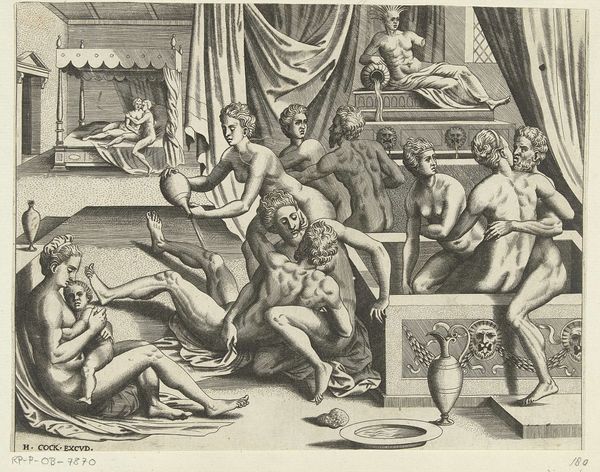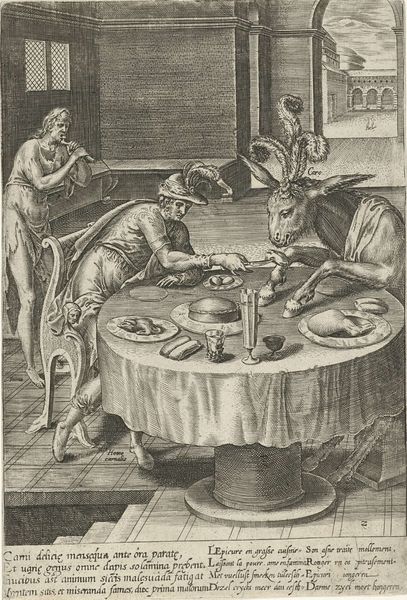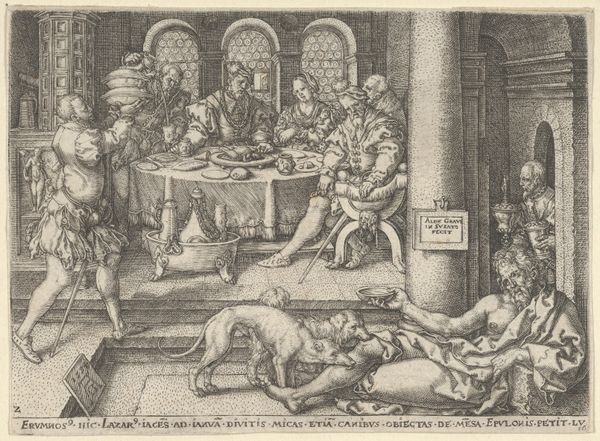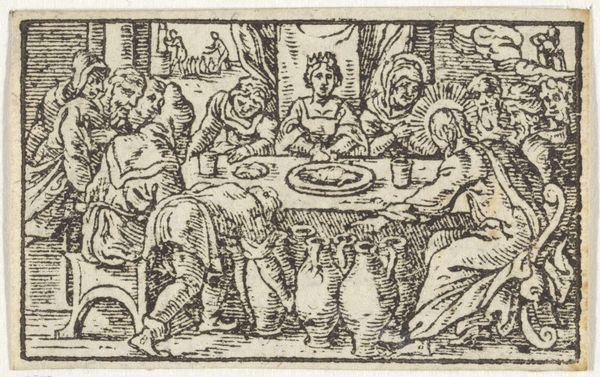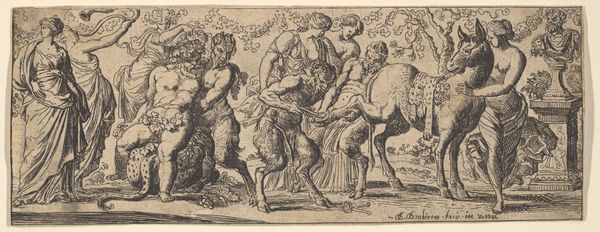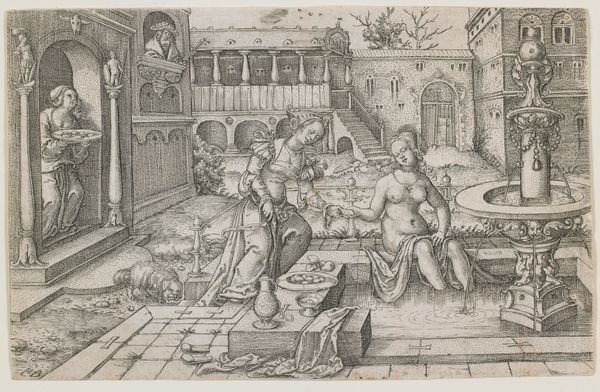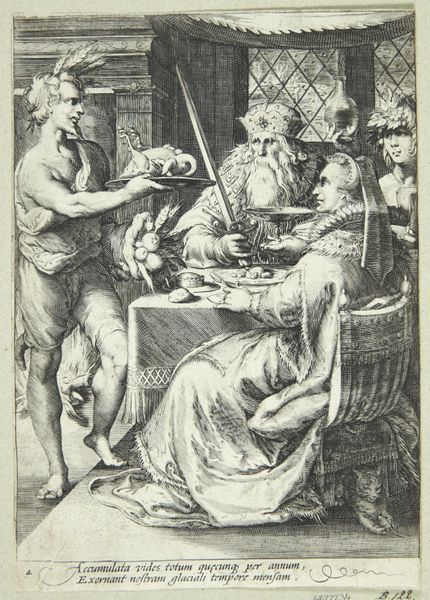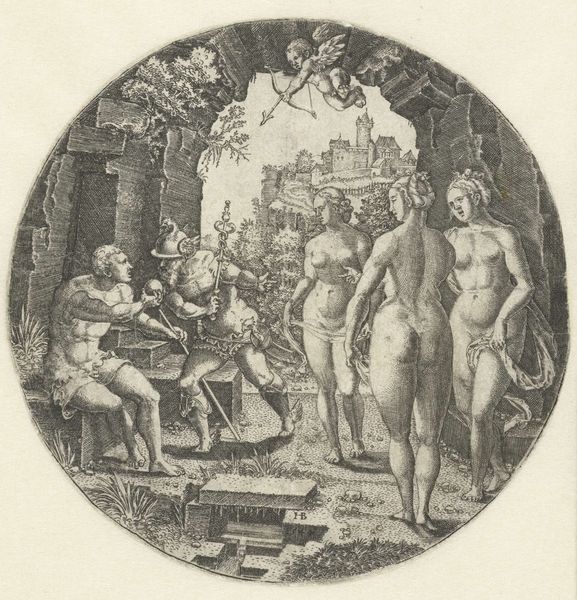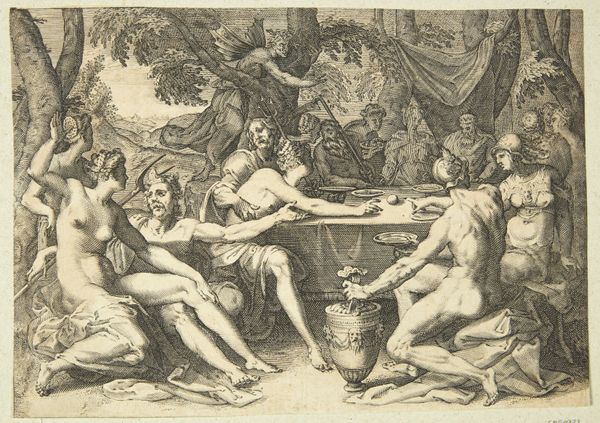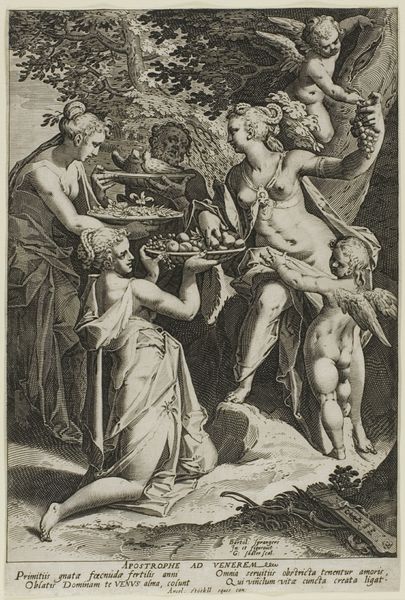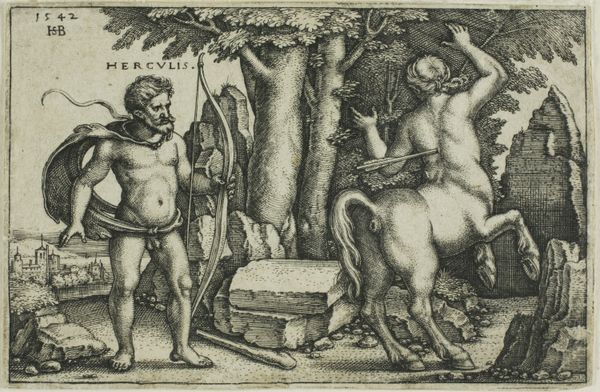
print, engraving
# print
#
mannerism
#
genre-painting
#
history-painting
#
engraving
Dimensions: height 98 mm, width 107 mm
Copyright: Rijks Museum: Open Domain
This engraving by Wierix, made around the turn of the 17th century, depicts a group of figures at a feast, laden with symbolic meaning. At the forefront, we see a bacchante, a follower of Bacchus, god of wine, seated upon a goat. This figure and the flowing wine immediately evoke themes of revelry and excess, central to the Bacchic rituals of antiquity. The bacchante, often depicted in a state of ecstatic frenzy, has origins tracing back to ancient Greece, and these symbols have been consistently employed to represent states of irrationality. Consider how such motifs recur in later works: the maenads tearing apart Pentheus in Euripides' "The Bacchae," or even the frenzied dances depicted in Renaissance paintings. Over time, the emotional charge of Bacchic imagery remains potent, tapping into primal aspects of human psychology. Indeed, the enduring power of these images lies in their capacity to engage us on a deeply subconscious level. They are not merely decorative but act as conduits, channeling collective memories and psychological truths. This motif has had a non-linear, cyclical progression, resurfacing, evolving, and taking on new meanings in different historical contexts.
Comments
No comments
Be the first to comment and join the conversation on the ultimate creative platform.
